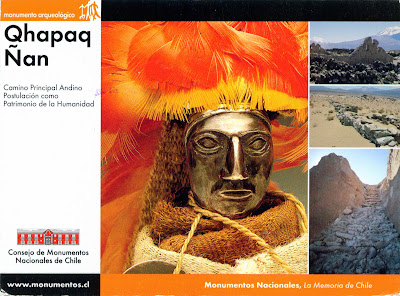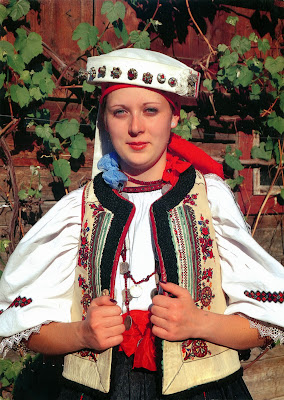China (and also India) seems to use another scale than Europe. Whether it comes to population, surface, the height of the mountains, the extent of the forests, the rivers flow rate or God knows what something else. One of the figures stuck in my memory for years is 400,000. So many prisoners of war executed a Qin commander after the
Battle of Changping, in the 3rd century BC. Burying they alive, but this is another aspect of the story. About the same time,
Hannibal slaughtered at
Cannae, in probably the most important but also the bloodiest battle of the European antiquity, 70,000 troops, of those 86,000 how many had the fabulous
Roman army. As I said, a completely different scale.
Is also the case of the
Great Wall of China. In Europe have been also built, mainly by the Romans, extensive fortifications to defend the borders, such as, to give just two examples,
Trajan’s Wall (to the today territory of
Romania,
Moldova and
Ukraine) and
Hadrian’s Wall (in
Roman Britain, at the other edge of the
Empire). Both have several tens of km.
Great Wall of China has about 6,260 km, if we don't count the tranches and the natural barriers.
When I was a kid, I imagined that the Great Wall is a stone snaking line, continuous from one end to another of northern China, and was built in a relatively short period of time. Great was my surprise when I learned that in fact the wall is a phylum of walls, following different directions and being built (from the materials specific to the traversed areas) during the 2,000 years, since the 5th century BC. The most famous part, which appears in many pictures, was built in the 14th century, during the
Ming Dynasty (1368-1644), who attempted to stop the
Manchurian and
Mongolian tribes who came from the north. As one of the most impressive constructions ever raised by man,
The Great Wall couldn't miss in the list of UNESCO World Heritage, in which was included in 1987.
The watchtower at Laoniuwan (Pianguan County, Shanxi) - posted on 03.12.2011
Laoniuwan Valley (located in Pianguan County,
Shanxi, and named also "old ox valley", after a hillside that resembles an ox head on its
Inner Mongolian side) is considered one of the most beautiful valleys in China because it’s the place where contry's two greatest symbols - the Great Wall and Huang He (the
Yellow River) - meet. The Yellow River, the cradle of Chinese civilization, is the second-longest river in China (after the
Yangtze) and the sixth-longest in the world. On a cliff located on the bank of Yellow River is a well-kept watchtower (the one that appears in the first postcard) made of bricks, called Wanghe Tower, or "watch river tower". It was built in 1544 by a Shanxi governor and reinforcements were added later. It was used to observe the enemies and sending messages by burning wolf waste.
Pianguan County own a total of 500 km long of Great Wall, including, apart from the most commonly found Ming-dynasty Great Wall, also Great Wall of
Zhao States during the
Warring States Period (476-221 BC), and Great Walls of the
Qin Dynasty (221 BC - 207 BC) and the
Northern Wei Dynasty (386 - 557). Besides the walls, the military defense system also including over 1,000 towers and 49 castles.
The Great Wall at Guantunbu (Fengzhen County, Inner Mongolia) - posted on 21.03.2012
The earliest wall in
Inner Mongolia was constructed by the
Zhao States during the
Warring States Period (476BC - 221BC), from Wei County of
Hebei Province
in the east to
Bayannur of Inner Mongolia in the west. Only certain
parts of the wall still stand today, north of Hohhot City (a wall built
of rambled earth, as well as bricks at some parts with less earth), and
in Baotou (98m long, 5.8m wide and 3.4m high, badly damaged). After
Qin Shihuang created the first unified Chinese empire in 221 BC, he sent the general
Meng Tian to drive the Xiongnu from the region, and incorporated the old Zhao wall into the
Qin Dynasty
Great Wall. A section was discovered in Bayannur City and ruins of
beacon towers were found every 0.5 km to 1.5 km near the wall. There are
also relics of houses, believed to be the military fortress of the
wall, at the highland not far from the wall.
On the Worrad Grassland north of Inner Mongolia, two
Han Dynasty
Great Walls traverse the grassland to the northwest into Mongolia.
According to archaeologists, the walls were constructed in 102 BC during
the
Western Han Dynasty
(206BC - 24AD). The one in the north is called the Han Dynasty Outer
Great Wall, while the one in the south Han Dynasty Inner Great Wall. The
Liao,
Jin, and
Yuan
dynasties, who ruled Northern China throughout most of the 10-13th
centuries, had their original power bases north of the Great Wall
proper; accordingly, they would have no need throughout most of their
history to build a wall along this line. The Liao carried out limited
repair of the Great Wall in a few areas, however the Jin (1115-1234)
did construct defensive walls in the 12th century, but those were
located much to the north of the Great Wall as we know it, within
today's Inner and Outer Mongolia.
After the Yuan Dynasty was evicted by the Han-led
Ming Dynasty
in 1368, the Ming rebuilt the Great Wall at its present location, which
roughly follows the southern border of the modern Inner Mongolia
Autonomous Region (though it deviates significantly at the Hebei-Inner
Mongolia border). The Ming established the Three Guards composed of the
Mongols there. The Great Wall measures 150 km in Qingshuihe County.
About 7,000 towers were discovered, including 5,000 beacon towers, 6
fortresses, 5 passes, and many water gates. Most of the towers are
well-preserved, and has a width of 15-19m and a height of 20-22m. Many sections of the Great Walls in Inner Mongolia are badly damaged,
mainly by wind and sand storm, but also by human. Research shows that
90% of the locals don’t even know the existence of the Great Walls in
Inner Mongolia!
The Jinshanling section (Lunaping County, Hebei) - posted on 16.10.2013
This section of the Great Wall, located in the mountainous area in
Luanping County, at 125km northeast of
Beijing, is connected with the Simatai section to the east, and was first built in the sixth century during the
Northern and Southern Dynasties (420-589). Some distance to the west lies the Mutianyu section. It is 10.5 km long with 5 passes, 67 watchtowers and 2 beacon towers. During the
Ming Dynasty,
General Qi Jiguang improved the structure of the wall by making it higher and denser, and by building double walls at strategic sections. As can be seen in the postcard, the Jinshanling Great Wall is like a giant dragon, curving its path over the mountain peaks whose line it follows. The Great Wall from Simatai in Beijing to Jinshanling in Hebei is the best preserved stretch, but it isn't fully renovated, so it has a more natural ambience than other stretches of the wall that have been completely rebuilt.


















































